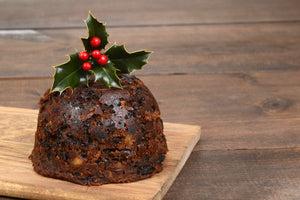What is the origin of the candy cane?

If you're like most people, you probably enjoy a delicious candy cane around the Christmas holiday period. But have you ever stopped to wonder where they came from? And what is the origin of our favorite Christmas candy? While there are many different theories out there, and we may never know the true origins for sure, but as it turns out, the answer is pretty interesting!
Where does the candy cane come from?
The candy cane has been around for centuries, and its origins are actually quite murky. There are many different theories about where candy canes originated, but the most popular one is that they were first created in Germany in the 1670s. According to this theory, candy canes were originally designed by the Choirmaster at the Cologne Cathedral wishing to keep the children quiet during long services, especially on Christmas Eve. It is thought he designed the candy in the shape of a shepherd's staff, as a symbol of Christianity.

The Cologne Cathedral with a Christmas market outside
Candy canes being shaped like a J for the word Jesus is also a popular theory, but there is no real evidence to support this. However, it is a widely accepted theory, as the candy cane does resemble the letter J when you look at it from the side with the crook at the bottom.
The National Confectionery Association reports that candy canes are the No. 1 selling non-chocolate treat in December - with 90% being sold between U.S Thanksgiving and Christmas!
If you look at a candy cane with the crook at the top, it looks like a shepherd's staff. Another popular theory is that candy canes were created in the shape of a shepherd's staff, as a symbol of the Three Wise Men who visited Jesus in the biblical story of the Magi.
Whether you believe in the Choirmaster, Shepherds Staff, or Shaped like a J for Jesus theory one thing is for sure - candy canes are a Christmas tradition that we all love. And with their festive red and white stripes, they’re also the perfect addition to any holiday decor. So, we have explored the true origins of candy canes, but how did they become such a popular symbol of Christmas?
How did candy canes become a popular Christmas symbol?
It took some time for candy canes to become a popular Christmas symbol. As far as we know, they were first referenced in the 1830s when the Massachusetts Charitable Mechanic Association hosted an exhibition in 1837 where confections were judged competitively. A candy known as "stick candy" caught the attention of the attendees, which suggests that this type may have been new to them! It isn't until 1844 that the first recipe for straight white and colored peppermint candy sticks was published in the cookbook "The Complete Confectioner, Pastry-Cook, and Baker." Then, in 1882 Babyland magazine describes "tall, twisted candy canes" being hung on a Christmas tree.
So, it wasn't until the early 1900s that the candy cane became a popular Christmas symbol throughout Europe and America. Candy canes were originally only available during the holiday season, and they were handmade. However, as candy became more mass-produced in the early 20th century, candy canes became more widely available and their popularity increased.
It certainly helped to popularise candy canes as they were also mentioned in the popular Christmas song "Christmas Alphabet."
Ok, so everyone was eating them from the early 1900s onwards throughout America and Europe, but were people making them at home or were they mass-produced by candy makers around the world to meet the insatiable demand?
Who first mass-produced candy canes?
While candy canes have been around for centuries, it wasn't until the early 20th century that they became mass-produced. One of the first candy companies to do this was Bob's Candies, which was founded in 1919. Bob's Candies is credited with popularizing candy canes in the United States, and they are still one of the leading candy cane manufacturers today. Candy canes were originally only available during the holiday season, but as they became more mass-produced, they became more widely available and their popularity increased.

A pack of Bob's Candy Canes
Why do candy canes taste like peppermint?
Again, this one is a little hard to find the correct answer, however, the peppermint plant has been around since ancient times and can be found in medicinal uses throughout Europe, Asia Pacific Islands as well. In the Middle East, it's valued for its refreshing aroma which is why some countries use both fresh or dried leaves to make tea while others rely on oils from this speedy growing herb that thrives under cool conditions. Mix this with small round candies being a traditional medicinal reliever of pain, upset tummies, and more, it is no surprise that candy canes taste like peppermint!
How are candy canes made?
So this Christmas, when you’re enjoying a delicious candy cane, take a moment to reflect on its humble beginnings as a straight white stick. And no matter what flavor you choose, we hope you have a very happy holiday season!

Subscribe to our Christmas Club and get a free song!
- Choosing a selection results in a full page refresh.
- Press the space key then arrow keys to make a selection.
















